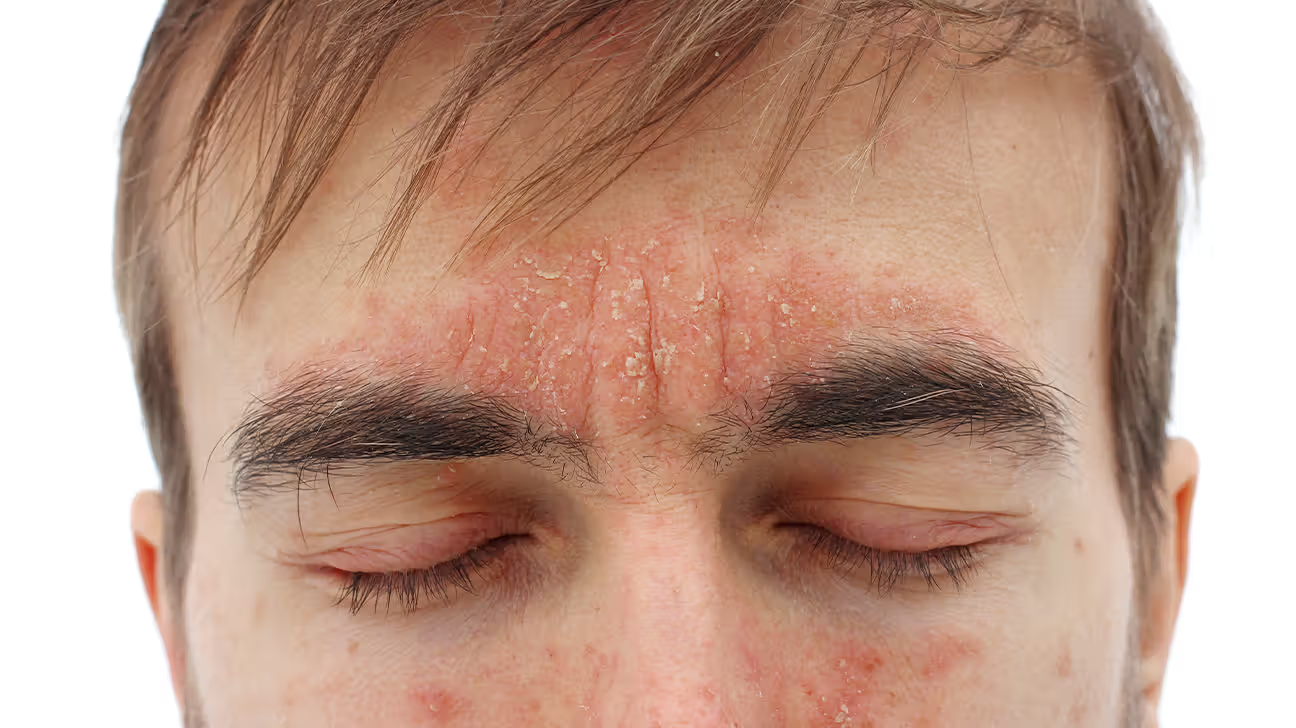Seborrheic dermatitis (SD) is a chronic inflammatory skin condition affecting sebaceous gland-rich areas. While various treatments exist, safer and more effective options are needed. This review focuses on topical treatments, including the newly FDA-approved roflumilast foam.
Key Findings: Topical Treatments for Seborrheic Dermatitis
•Mainstays of Treatment: Topical antifungals (TAFs), topical corticosteroids (TCSs), and topical calcineurin inhibitors (TCIs) are the primary topical treatments for SD.
•Topical Antifungals (TAFs):
◦FDA-Approved TAFs: Ketoconazole 2% (shampoo, cream, gel, or foam), ciclopirox 1% (cream, lotion, shampoo, or gel) and miconazole 2% (solution or cream) are FDA-approved and effective, with level A evidence.
◦Efficacy: These TAFs have comparable efficacy in improving erythema, scaling, and itch.
◦Application: TAFs may be used on the scalp, face, ears, and chest.
◦Side Effects: Infrequently associated with application-site pruritus, dryness, stinging, burning, and tingling sensations.
◦Alternative TAFs: Topical terbinafine 1% cream, clotrimazole 1% cream, and sertaconazole 2% cream have shown off-label efficacy5.
•Topical Corticosteroids (TCSs):
◦Use: TCSs are used for their anti-inflammatory, immunosuppressive, and antiproliferative properties, with Level A evidence.
◦Application: TCSs can be used on- and off-label for SD, including clobetasol 0.05%, fluocinolone 0.01%, betamethasone valerate 0.12%, and hydrocortisone 1%/2.5%.
◦Limitations: Long-term use is limited by potential side effects such as skin atrophy, telangiectasias, hypertrichosis, and perioral dermatitis.
•Topical Calcineurin Inhibitors (TCIs):
◦Use: Pimecrolimus (1% cream) and tacrolimus (0.1% ointment) have level A evidence supporting their use, though they lack FDA approval for SD.
◦Benefits: TCIs are effective and safer for short-term use, especially on sensitive areas like the face, neck, and eyelids.
◦Efficacy: Pimecrolimus and tacrolimus have comparable efficacy to TCSs and antifungals.
◦Side Effects: Common side effects include burning, erythema, irritation, or itching at the application site.
•Roflumilast 0.3% Foam:
◦Approval and Function: A newly FDA-approved phosphodiesterase 4 inhibitor (PDE4i) for patients ages 9 and older that suppresses proinflammatory cytokines.
◦Benefits: Shown rapid improvement in SD symptoms, suitable for diverse skin and hair types, and minimal side effects.
•Other Topical Treatments:
◦Metronidazole 0.75% gel: Shown superiority compared to placebo for treating facial SD in trials, but not clinically utilized given alternative options.
•Over the Counter (OTC) Treatments:
◦Antifungal Shampoos: Selenium disulfide and zinc pyrithione are effective for managing SD on the scalp due to accessibility and affordability.
◦Combination Shampoos: Shampoos with non-steroidal anti-inflammatory and antioxidative agents, antifungal agents, and keratolytics have shown potential in treating SSD, but additional evidence is needed.
The management of SD involves a range of topical treatments, each with its own benefits and limitations. Roflumilast foam is a novel, well-tolerated option that may become a first-line therapy. Thoughtful treatment strategies and consideration of patient-specific factors, such as skin and hair type, and demographics, are crucial for improving outcomes.
Link to the study: https://link.springer.com/article/10.1007/s13555-025-01351-z

